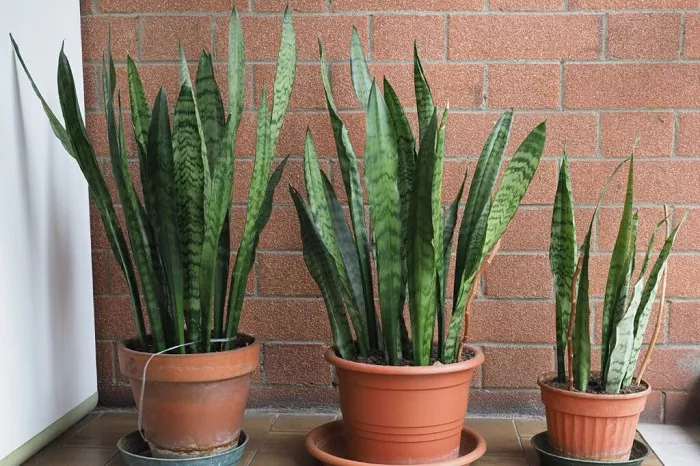Snake plants, also known as Sansevieria, are beloved for their striking appearance and hardy nature. These plants thrive in various conditions, making them perfect for both novice and experienced gardeners. From their unique growth patterns to their air-purifying qualities, understanding how snake plants grow can enhance your gardening experience. This article delves into the intricacies of their growth, offering insights to help you nurture these resilient plants.
Ideal Growing Conditions
Light Requirements
Snake plants are remarkably adaptable when it comes to light. They can tolerate a wide range of lighting conditions, from bright, indirect sunlight to low light areas. However, for optimal growth, place them near a window where they can receive bright, filtered light. Direct sunlight for extended periods may cause the leaves to scorch, so it’s best to avoid placing them in direct sun during the hottest parts of the day. In low light conditions, their growth rate may slow, but they will still survive.
Temperature and Humidity
These plants are native to warm climates and thrive in temperatures between 70°F and 90°F (21°C to 32°C). They can tolerate cooler temperatures but should be kept above 50°F (10°C) to prevent damage. Snake plants are also quite tolerant of low humidity levels, making them suitable for indoor environments. However, they will appreciate occasional misting or placement near a humidifier, especially in dry climates or during winter months when indoor air tends to be drier.
Soil and Watering
Choosing the Right Soil
Snake plants prefer well-draining soil to prevent root rot. A mixture of potting soil, perlite, and sand is ideal, as it provides the necessary drainage and aeration. You can also use a cactus or succulent mix, which is specifically formulated for plants that need good drainage. The soil should be loose and not compacted, allowing water to pass through easily and air to reach the roots.
Watering Tips
One of the key aspects of growing snake plants is understanding their watering needs. These plants are drought-tolerant and do not require frequent watering. Overwatering is a common mistake that can lead to root rot and other issues. Allow the soil to dry out completely between waterings. During the growing season, water the plant thoroughly until water drains from the bottom of the pot. In winter, reduce watering frequency, as the plant’s growth slows down and it requires less moisture.
Propagation Methods
Division
One of the easiest ways to propagate snake plants is through division. This method involves separating the plant’s rhizomes, which are underground stems that produce new shoots. Carefully remove the plant from its pot and gently separate the rhizomes, ensuring each section has roots and leaves. Plant the divided sections in separate pots with well-draining soil. Division is best done during the spring or summer when the plant is actively growing.
Leaf Cuttings
Leaf cuttings are another effective propagation method. Select a healthy, mature leaf and cut it into sections about 3 to 4 inches long. Allow the cut ends to dry and callous over for a day or two. Then, place the cuttings in a well-draining soil mix, burying about one-third of the cutting in the soil. Keep the soil slightly moist and place the pot in a warm, bright location. New roots and shoots should emerge within a few weeks.
Common Issues and Solutions
Pests and Diseases
Snake plants are generally resistant to pests and diseases, but they can occasionally be affected by mealybugs or spider mites. Mealybugs appear as small, white, cottony masses on the leaves and stems. Spider mites can cause yellowing and speckling of the leaves. To treat these infestations, wipe the leaves with a damp cloth or use a mild insecticidal soap. Overwatering can lead to root rot, which is characterized by mushy, brown roots. To prevent this, ensure proper drainage and avoid overwatering.
Leaf Tips and Edges
Brown leaf tips and edges are common issues in snake plants. This can be caused by overwatering, underwatering, or exposure to harsh chemicals in tap water. To address this, adjust your watering schedule and use filtered or distilled water. Trimming the brown tips can improve the plant’s appearance, but it’s essential to address the underlying cause to prevent further damage.
Maintenance and Care
Pruning
Regular pruning helps maintain the plant’s appearance and health. Remove any damaged or yellowing leaves to prevent the spread of disease. Pruning also encourages new growth and can help shape the plant. Use a clean, sharp knife or scissors to make clean cuts at the base of the leaves. Be sure to sterilize your tools before and after pruning to avoid introducing pathogens.
Fertilizing
While snake plants do not require frequent fertilization, they can benefit from occasional feeding during the growing season. Use a balanced, water-soluble fertilizer diluted to half strength. Apply the fertilizer every 2 to 3 months to provide the necessary nutrients without overfeeding. Avoid fertilizing during the winter months when the plant is dormant.
Conclusion
Snake plants are truly remarkable additions to any garden or home. With their ability to thrive in various conditions and their air-purifying qualities, they offer both aesthetic and functional benefits. By understanding their growth requirements and providing the right care, you can enjoy the beauty and resilience of these plants for years to come. Whether you are a seasoned gardener or just starting your green journey, snake plants are sure to bring a touch of nature’s charm to your space.


